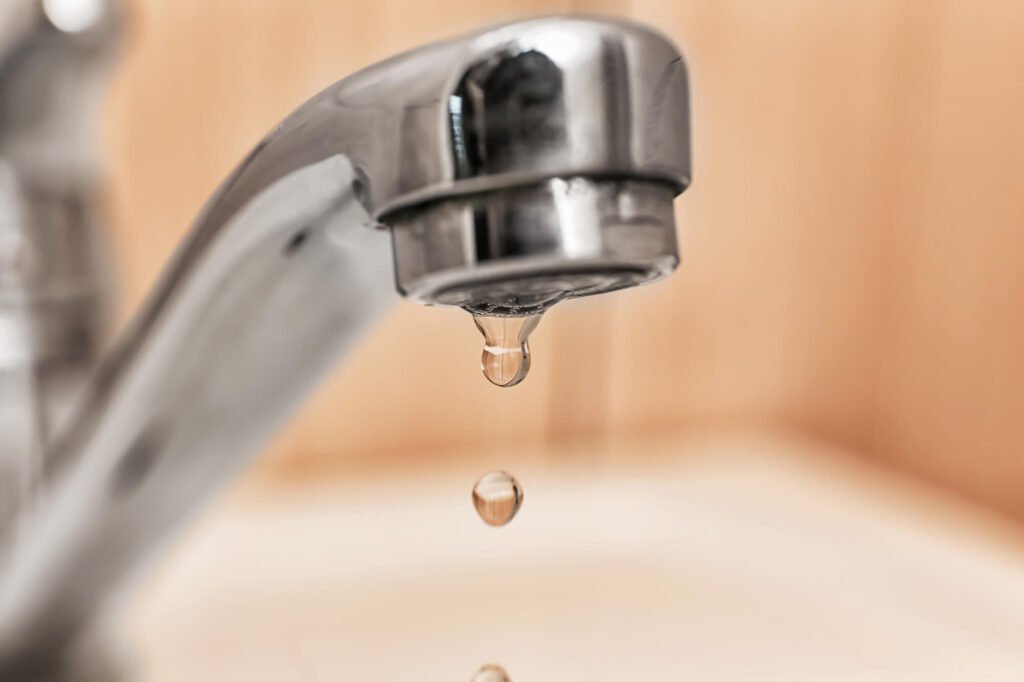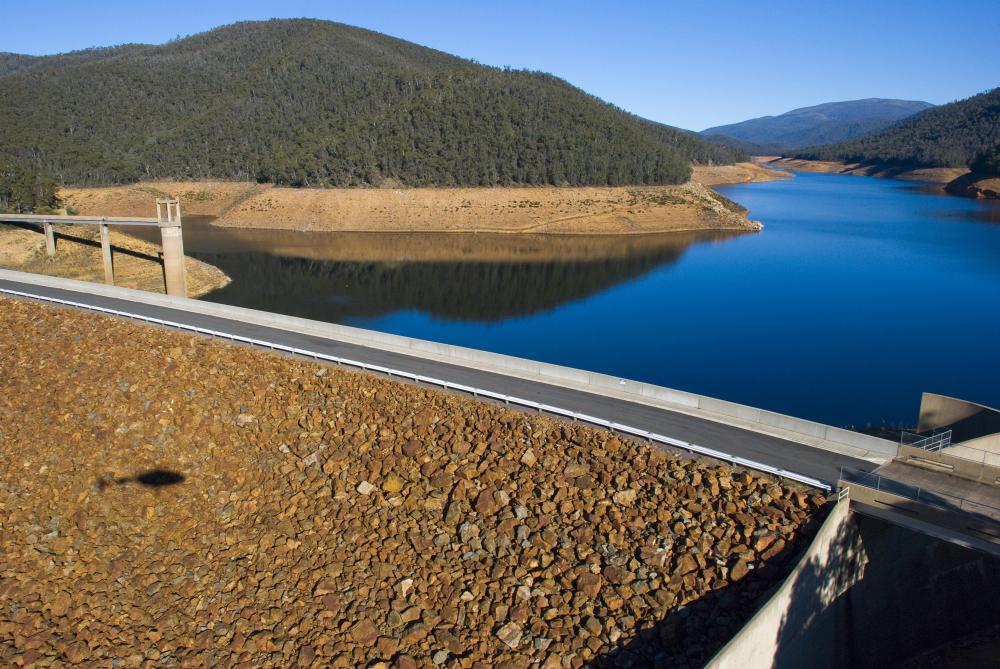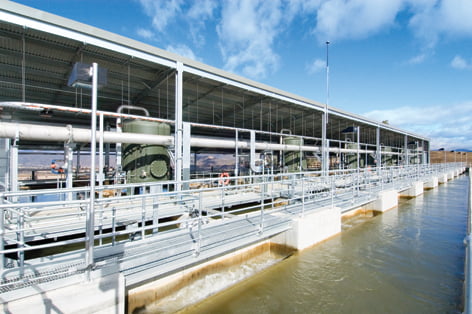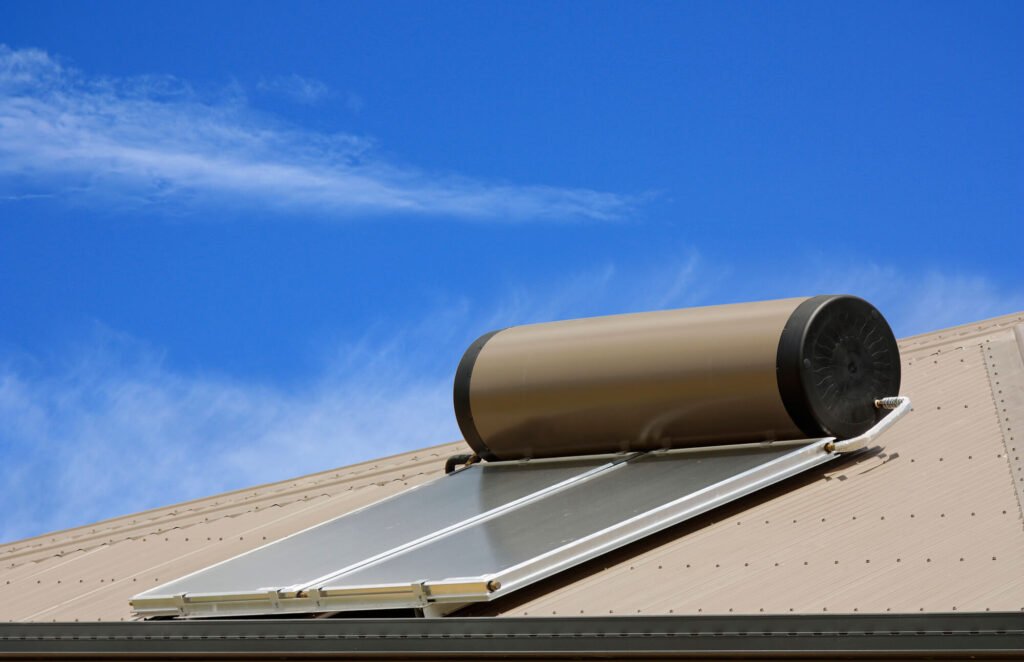At Fluid Plumbing, we’ve made the difficult decision to discontinue our plumbing services in the Canberra, ACT region. For our valued Canberra customers, we are pleased to recommend Level Plumbing Canberra for all your plumbing needs. We have every confidence in their expertise and commitment to quality service, and we wish you well as you continue to receive reliable and professional care.
Average Water Bills in Canberra


With the rising cost of living already hurting and many homeowners feeling the pinch of interest rates, it’s not the best of times to be announcing new water prices destined to hit the ACT in 2023.
Be that as it may, there is no stopping the water fee increase so putting some water-saving strategies in place now will see you well prepared for the current prices as well as those still to come.
Table: Current ACT water and sewerage prices compared to previous years and the changes recommended for 2023-2024
| Water | 2021-22 | 2022-23 | 2023-24 |
|---|---|---|---|
| Supply charge ($/year) | $180 | $200 | $205.87 |
| Tier 1* (first 50 kL per quarter) | $2.48 | $2.28 | $2.35 |
| Tier 2* (in excessof 50 kL per quarter) | $4.99 | $4.58 | $4.71 |
| Sewerage | 2021-22 | 2022-23 | 2023-24 |
|---|---|---|---|
| Supply charge ($/year) | $506.30 | $502.18 | $534.40 |
| Charge for flushing fixture in excess of 2 ($/fixture/annum) | $495.16 | $491.13 | 522.64 |
You can see from the table that prices actually went down from 2021 to 2022. That is because the proposed price increases were put on hold following the COVID-19 crisis.
*We will cover how the different tier charges work on your bill within this article.
Who Sets Canberra’s water price
Canberra water is supplied by Icon Water, which is fully owned by the ACT Government. Icon Water is the sole provider of water to the Canberra region because the government is the only one with access to ACT’s water resources such as dams, reservoirs, pipes and water treatment plants. Because of this monopoly, it’s essential that an independent regulator be the one to set the prices and review service operations. In the ACT the independent regulator is the Independent Competition and Regulatory Commission (ICRC).
The ICRC are responsible for assessing costs and delivery needs and setting prices for ACT town water and sewage removal.
The newest ICRC review to set prices for 2023-2024 has just been released with a finding that the cost of annual water and sewage supply charges needs to increase in the ACT to cover the uncertain operating environment.
How Water Prices Are Determined
The quality of drinking water is important for consumer health and sewage quality needs to be high as waste is discharged into the Murrumbidgee River for use by towns downstream.
Prices for water and water use charges are determined by immediate operating costs including:
- Staff wages
- Treatment chemicals
- Energy to run pumps
- Maintenance
- Tax liabilities
Also affecting water prices are long-term factors including:
Ageing Infrastructure – Most of Icon Water’s dams and reservoirs were built in the 1960s and 70s. As well as repairs to keep them operating, water prices need to cover upgrades to the water engineering faculties at Belconnen, Tuggeranong, Weston Creek and Woden Valley.
Population Growth – Over the next 20 years, (between now (2022 and 2042), ACT’s population is expected to increase by 33%. Upgrades will be needed to handle the future volume and maintain a safe level for both drinking water and waste removal.
Climate Change – Climate change affects rainfall as well as runoff patterns, changing ACT’s water availability and predictability. This is compounded by the more frequent threat of bushfires and heat waves that greatly affect water consumption and storage levels.
Government Policy – Water safety, correct treatment and quality is essential. Icon Water needs to meet numerous standards under both state and commonwealth levels to meet quality targets.
Excess Water Price
In order to encourage water saving there are Tier 2 charges for any water used in excess of 0.548 kL on average per day. That gives a Canberra household access to cheaper water up to almost 550 litres of water per day, with usage rates increased after this. The Tier 2 tariff is per household, not per occupant so larger families will need to pay the excess water price while the Tier 1 cap should be adequate to cover a two-person household easily enough.
Current water price in Canberra
As of 1 July 2022 – 30 June 2023 the water price in the ACT is as follows:
| Water | |
|---|---|
| Water Supply charge | $200 for a full year |
| Water usage Tier | $2.28 per kL |
| Water Usage Tier 2 | $4.58 per kL |
| Sewerage | |
|---|---|
| Supply charge | $502.18 for a full year a year |
| Extra flushing fixture | $491.13 per unit per year in excess of two units |
There are two tiers shown for water use prices. Tier 1 is the price for the first 50kL of water per quarter per household – which works out to around 550 litres of water per day for the payment period. Tier 2 is the price for all water metered in excess of 50 kL per quarter


Average Water Bills in Canberra
Average water bills in Canberra are hard to determine as there are a range of different factors that influence water demands such as the number of occupants (adults and children), the number of bathrooms, garden size, and home and appliance energy efficiency ratings.
These factors can change not just household to household but also season to season and even week to week.
To determine how the new rates will affect the average user’s water bills we’ve listed some typical examples based on Census 2021. Data shows that the majority of the Canberra population are two people per household (Census average 2.3 people per household).
The majority of families were couples without kids (46.5%) while couples with children averaged 1.7 kids per family. Three bedroom homes are the most common, followed by 4+ bedroom homes and 2 bedroom homes.
The average water use is 100kL per annum per person. For an average two person home with no more than two toilets, a homeowner’s quarterly water bill will look like this for 2022:
Two person home
Annual Water Supply + Sewage = $702.18
Annual Water Use Tier 1: 200kL x $2.28 = $456.00
Annual Total = $1,158.18
This will be billed quarterly for around $289.55 per bill.
For a home with two adults and two kids, each using 100kL a year the bill will look very different as the excess water tariff will be included.
Four person home
Annual Water Supply + Sewage = $702.18
Annual Water Use Tier 1 200kL x $2.28 = $456.00
Annual Water Use Tier 2 200kL x $4.58 = $916.00
Annual Total= $2,074.18
This would be billed quarterly for around $518.55 per bill.
In 2023 – 2024 the new water and sewage supply rates the average homeowner will see an increase of around $58.00 to their total yearly water costs.
Understanding your water bill
Water bills typically come every three months. Your bill will show your billing period with the dates From and To as well as how many days this billing cycle covers. Your bill will show how much of your water use is charged at Tier 1 prices, how much is Tier 2 and your total costs to pay.
To determine your water usage your bill will display how many kL of water was read at the previous reading and how much is on the current reading. The difference between these numbers is the amount of water you used for this period. For example
| Previous read | Current read |
|---|---|
| 5,545 | 5,667 |
The total for this billing period is 5667 – 5545 = current usage 122kL.
In this case the first 50kL to be billed in Tier 1 and the remaining 72kL charged at Tier 2.
Water usage is measured in kL. This stands for kiloliters which is 1,000 litres of water. A household using 120kL has consumed 120,000 Litres of water in the three month cycle.
How to save money on your water bill
There are plenty of ways you can save money on your water bill. As well as being conscious of how much water you consume to consciously decrease water usage, there are also ways you can save water without noticing a cut back:
- Buy water-efficient appliances for your dishwasher and washing machine
- Use the Eco cycle on your appliances
- Wait to run your appliances when they are full
- Use a low-flow showerhead
- Fix leaks and dripping taps
- Collect rainwater for washing the car and watering the garden
Just turning off the tap while you brush your teeth can save our precious water resources and help save money. A little bit of water saving every day will make a big impact on your overall bill, especially if your household typically exceeds the Tier 1 capacity.
If you need help assessing tap leaks or changing to water-saving appliances call a qualified plumber for advice, installation and service.
Canberra is known as the Bush Capital due to its inland location, far from any major water source and surrounded by deserts. Fortunately, it has an abundant water supply that keeps Canberra’s residents with access to plenty of fresh, clean water.
Get a better understanding of Canberra’s water supply and make sure you have all the facts! In this guide, you’ll learn about Canberra’s water supply system, the water treatment process and how water gets from the source to your home or business.


Water Catchments and Dams
The Canberra water supply is managed by Icon Water, an independent statutory authority. Established in 1999, Icon Water is responsible for the delivery of safe, reliable and affordable water services to the ACT region.
This includes managing the water catchment areas, which are located mainly in the Brindabella Ranges, as well as the treatment, storage and distribution of drinking water and wastewater services.
Icon Water operates a number of dams and treatment plants throughout the region. These facilities are used to store, treat and distribute drinking water throughout Canberra. The majority of Canberra’s water supply is sourced from four main dams: Corin, Bendora, Cotter and Googong. Most of the water stored in these dams is supplied to residents, businesses and other customers across the ACT.
In addition to these dams, there are also two major groundwater supplies: the Namadgi Aquifer and the Jerrabomberra Aquifer. These aquifers are located in the Tuggeranong Valley and the Molonglo Valley respectively, and provide an additional water source for Canberra.
The Murrumbidgee River is also used to supplement the water supply during periods of high demand. This water is collected from surrounding catchments and released into Lake Burley Griffin.


Mount Stromlo Water Treatment Plant [source: Icon Water]
Local Water Treatment Plants
Water from the Cotter River and Murrumbidgee River catchments is treated at Mount Stromlo Water Treatment Plant, which can produce up to 250 megalitres per day.
Water from Googong dam is treated at the Googong Water Treatment Plant which, thanks to its new dissolved air flotation and filtration process, has increased the capacity of the plant from 180 megalitres per day up to 270 megalitres per day.
The Water Treatment Process
To make sure the water delivered to Canberra homes and businesses is safe and of the highest quality, it must first go through a series of steps.
Coagulation and Flocculation
At the treatment plant, the water firstly goes through a filtration process where the tiny particles come together to form larger particles. The water is then mixed and circulated, causing these larger particles to float to the top in a sludgy froth.
Dissolved Air Flotation
This is an optional step that involves dissolving air in the water, causing suspended matter such as oil or solids to float to the surface. They can then be much more easily removed during the filtration process.
Filtration
To remove any remaining particles, the water is then pumped through filters made from anthracite coal and sand.
Fluoridation
Once the water has been filtered, fluoride is then added to the water, which helps maintain healthy teeth, just as your toothpaste does!
pH Adjustment
To bring the water pH level up to a potable standard, lime is then added. Lime is also used to help reduce water hardness and improve the overall water quality.
Disinfection
Disinfecting the water involves a two-step process. Firstly, ultraviolet light is used to kill harmful bugs, and then chlorine is added to eliminate any residual bacteria.
Safety and Quality Testing
Finally, the water is tested for safety and quality before it is sent out to Canberra’s taps.
With this comprehensive treatment process in place, you can rest assured that your tap water is safe and of the highest quality.
Conserving Canberra’s Water Resources for the Future
Once the water has been processed and stored, it is ready to be distributed for use. There are four main ways that water is distributed: recycled wastewater, drinking water, fire fighting and irrigation.
Icon Water also works to conserve Canberra’s water resources by operating a number of programs designed to promote water efficiency, reduce water use and improve water quality. Icon Water’s initiatives include the ‘Love Water’ program, which helps households and businesses save money by using water efficiently.
COAG Urban Water Reform
Urban water reform is a hot-button issue in Australia, particularly for the citizens of Canberra. In 2004, the Council of Australian Governments (COAG) passed a major urban water reform package to improve the sustainability of Australia’s water supply and ensure that water is used more efficiently.
Canberra’s water supply is managed by the ACT Government, who must comply with the COAG urban water reform package. This package sets out a range of measures to improve the efficiency of the city’s water use and promote sustainability in the long term.
These measures include:
• Metering: All new developments must install meters to measure and monitor water usage.
• Water efficiency: The ACT Government must develop strategies to reduce water consumption and encourage more efficient use of water.
• Water recycling: Recycling treated wastewater for non-potable uses such as irrigation and industry can help reduce reliance on fresh water sources.
• Catchment management: Protecting and managing the city’s catchment areas is vital to ensure the quality and quantity of water available.
These measures are designed to ensure that Canberra has an adequate and reliable water supply, both now and into the future. By taking proactive steps to manage our water resources, we can ensure that everyone has access to clean, safe water for generations to come.
As the population of Canberra, Australia, grows, so does the demand for efficient hot water systems. For families with four or more people, it’s crucial to have a hot water system that not only provides enough hot water but also operates efficiently and economically. In this blog post, we will discuss the top three hot water systems perfect for larger households in Canberra: Solar Hot Water Systems, Gas Continuous Flow Hot Water Systems, and Heat Pump Hot Water Systems. We’ll delve into each option’s pros and cons, provide you with some popular brand recommendations, and examine product ratings from Choice.com.au and ProductReview.com.au to help you make an informed decision.


Solar Hot Water Systems
Harnessing the power of the sun, solar hot water systems are an environmentally friendly and energy-efficient choice. They use solar collectors mounted on your roof to heat the water, which is then stored in a storage tank. Solar hot water systems are perfect for Canberra’s sunny climate and can help you save on energy costs in the long run.
Pros:
- Environmentally friendly, reducing greenhouse gas emissions.
- High energy efficiency leading to lower energy bills.
- Government rebates and incentives are available to offset the initial cost.
Cons:
- Higher upfront costs compared to other systems.
- Requires a backup heating source for overcast days or periods of high demand.
- Needs regular maintenance for optimal performance.
Popular Solar Hot Water System Brands and Ratings:
- Apricus: Known for their high-quality evacuated tube solar collectors, Apricus offers reliable and efficient solar hot water systems. Choice.com.au and ProductReview.com.au users have rated their products highly for performance, durability, and energy efficiency.
- Rheem: With a range of solar hot water systems, Rheem caters to various household sizes and budgets. Their products receive consistently positive ratings on both Choice.com.au and ProductReview.com.au for reliability and energy savings.
- Solahart: A well-established brand in Australia, Solahart offers both roof-mounted and ground-mounted solar hot water systems. Customers on Choice.com.au and ProductReview.com.au have praised Solahart for their excellent customer service, product quality, and energy efficiency.


Gas Continuous Flow Hot Water Systems
Also known as tankless or instantaneous hot water systems, gas continuous flow systems heat water on-demand as it flows through the system. These units provide an endless supply of hot water, making them suitable for larger households where multiple people might be using hot water simultaneously. Gas continuous flow systems are energy-efficient, as they only heat the water when required, reducing energy wastage.
Pros:
- Endless supply of hot water for larger households.
- Compact design saves space, as no storage tank is required.
- High energy efficiency, leading to lower energy bills.
Cons:
- Requires a gas connection, which may not be available in all areas.
- Can have higher upfront costs compared to electric storage systems.
- Slightly slower initial hot water delivery compared to storage systems.
Popular Gas Continuous Flow Hot Water System Brands and Ratings:
- Rinnai: Offering a wide range of gas continuous flow hot water systems, Rinnai is known for its energy-efficient and reliable products. On Choice.com.au and ProductReview.com.au, Rinnai receives high ratings for performance, energy efficiency, and ease of use.
- Bosch: With a strong reputation for quality, Bosch provides various gas continuous flow systems catering to different household sizes and budgets. Users on Choice.com.au and ProductReview.com.au have rated Bosch’s products highly for their reliability, performance, and energy savings.
- Rheem: Rheem’s gas continuous flow systems are well-regarded for their efficiency and durability. Choice.com.au and ProductReview.com.au customers consistently give positive ratings for Rheem’s products, highlighting their performance, energy efficiency, and customer support.


Heat Pump Hot Water Systems
Heat pump hot water systems use electricity to move heat from the air or ground to heat water. This process makes them an energy-efficient option, as they use less electricity than traditional electric storage systems. Heat pump systems work well in Canberra’s climate and are suitable for larger households.
Pros:
- Energy-efficient, leading to lower energy bills.
- Operates in a wide range of temperatures and climates.
- Government rebates and incentives may be available to offset the initial cost.
Cons:
- Higher upfront costs compared to traditional electric storage systems.
- Requires outdoor installation space for the heat pump unit.
- Can be noisier than other systems due to the operation of the heat pump.
Popular Heat Pump Hot Water System Brands and Ratings:
- Rheem: Rheem’s heat pump hot water systems are known for their efficiency, reliability, and excellent after-sales support. Both Choice.com.au and ProductReview.com.au users have rated Rheem’s heat pump systems highly for their performance, energy savings, and durability.
- Stiebel Eltron: A German brand with a strong reputation for quality and innovation, Stiebel Eltron offers a range of high-performance heat pump hot water systems. Customers on Choice.com.au and ProductReview.com.au have praised Stiebel Eltron products for their efficiency, reliability, and ease of use.
- Dux: With a commitment to energy efficiency and sustainability, Dux provides various heat pump systems to suit different household sizes and budgets. Dux heat pump systems receive consistently positive ratings on Choice.com.au and ProductReview.com.au for their performance, energy savings, and customer service.
Conclusion
When choosing the best hot water system for your Canberra home, consider factors such as energy efficiency, upfront and ongoing costs, available space, and warranty periods. Each system type has its unique advantages, and the best choice for your household will depend on your specific needs, budget, and preferences.
To ensure proper installation and sizing of the hot water system, it’s essential to consult with a local expert or licensed plumber. They can evaluate your home’s requirements and guide you through the process of selecting and installing the most suitable hot water system.
In summary, solar hot water systems are an excellent option for environmentally conscious households, with the added benefit of potential government incentives. Gas continuous-flow hot water systems are perfect for larger households requiring an endless supply of hot water without taking up much space. Heat pump hot water systems offer energy efficiency and can operate effectively in Canberra’s climate, making them a suitable choice for families looking to reduce their energy consumption.
By understanding the pros and cons of each system type, researching the popular brands mentioned above, and considering product ratings from Choice.com.au and ProductReview.com.au, you’ll be well-equipped to make an informed decision and enjoy the benefits of an efficient hot water system in your Canberra home.
